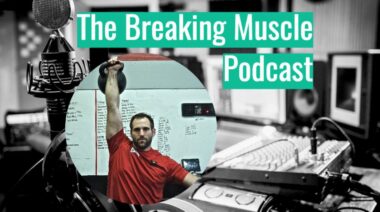What the heck is qigong? Why does it have a “Q” when it is pronounced “chee-gong”? Do you have to wear a silk uniform? Is it religious? Does it really cure cancer? What is “jing?” Is qi the same as “the force” in Star Wars? I once saw a demonstration where a guy used a “qi ball” to knock someone out; is that real? Can you do that? Do I need to understand the meridian system from Traditional Chinese Medicine (TCM)? Is there qigong food? Will I be able to shoot lightning bolts from my palms?
These are all things that people have asked when I talk to them about qigong. All except for that last one; that’s a running joke that I have with a friend of mine.
Qigong can and should be a whole lot simpler. For some people even the word qigong conjures up images of bizarre exercises and outrageous claims and abilities. I have seen some as well. For this reason, some people have dismissed it outright.
Qigong has absolutely helped my health, strength, and my judo. It is my hope that students of varied disciplines such as Brazilian jiu jitsu, judo, Muay Thai and MMA will give qigong a try to enhance their training.
An Unassuming Beginning
Like most things worth studying, you need to find a good teacher. My first teacher was a TCM doctor, and he didn’t teach anything beyond relaxing, breathing, using intention, and correct body alignment. He showed me how to stand as if embracing a sphere in front of me, and that is where it started. It was unusual, but not magical. It was useful and not complex.
I practiced embracing the sphere every day for 15 minutes. I felt it made me stronger, yet relaxed and more focused. It was subtle, but effective. My legs were stronger, and my posture improved. My arms were relaxed, but still able to hold the forms for long periods with little effort. My martial arts improved. The practice was meditative and unified my mind and body. Overall, I just felt good and that made it worth practicing, so I continued.
I studied for some years, then had to move away from my teacher. After I moved, I looked up qigong on the internet, hoping to find a new teacher. I found quite a few people teaching it, but in a strange way. There was a kind of magical take on what I had always thought and practiced as a very internal and useful form of exercise. There was no magic when I learned it. It was slightly esoteric, and some things were a little strange, but not magical. The focus was breath, alignment and intention. These are powerful things when you put them together, and will provide you with many amazing benefits, but you still won’t be able to shoot lightning bolts out of your palms.
Finding Freedom in Discipline
I wound up finding some great teachers. They taught qigong as well as xing yi, ba gua and tai chi. What struck me most about qigong was how simple it was. The emphasis from all of the teachers I encountered was to simply “do.” There was no real analysis beyond what the practitioner needed to know to do the exercise correctly. The benefits were felt, not explained. Only occasionally would the teacher give an explanation longer than a sentence, and that was only after learning from them for a while.
I once asked a question of a teacher about a particular part of a form, and their response stunned me: “If you are shifting your weight, breathing, and making circles with your hands it doesn’t really matter what you do.” Even now, the simplicity is awe-inspiring. It was a truth I always cherished and remembered. In fact, it has inspired me to work with qigong with “no form,” which I will write more about in the future.
The teacher was not saying that form was unimportant, or even that what they were teaching was to be taken lightly. What they were emphasizing was that in the total of the many important things related to qigong, there are some things that matter more than others. These three elements matter most:
- Breath
- Shifting weight
- Circular motion
It is simple to understand, but difficult to do. Most people want to add more, and look for things that may or may not be there. But if you want to enhance your martial arts training or just your health, there is little you need to know beyond the basics.
Simply Start Your Practice
My martial pursuits have benefitted immensely from studying qigong. Everything I have learned, from xing yi to judo, has made me realize the benefits of keeping up my qigong practice. I prefer the standing variety, so that is what I do the most. I encourage people studying any martial art to try some simple qigong. Start with the standing posture taught in my previous article. Do this for a few minutes a day for several weeks. Stand, relax, and breathe. You will start to feel great if you stick with it. Hopefully, you will add some type of qigong to whatever you study, but remember to keep it simple. If I ever learn how to shoot lightning bolts, I’ll be sure to let you know!
Learn to take full advantage of proper breathing:
A Primer on Diaphragmatic Breathing






